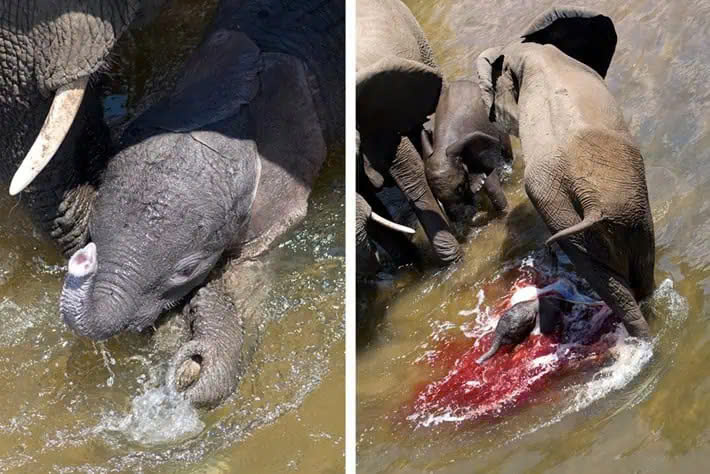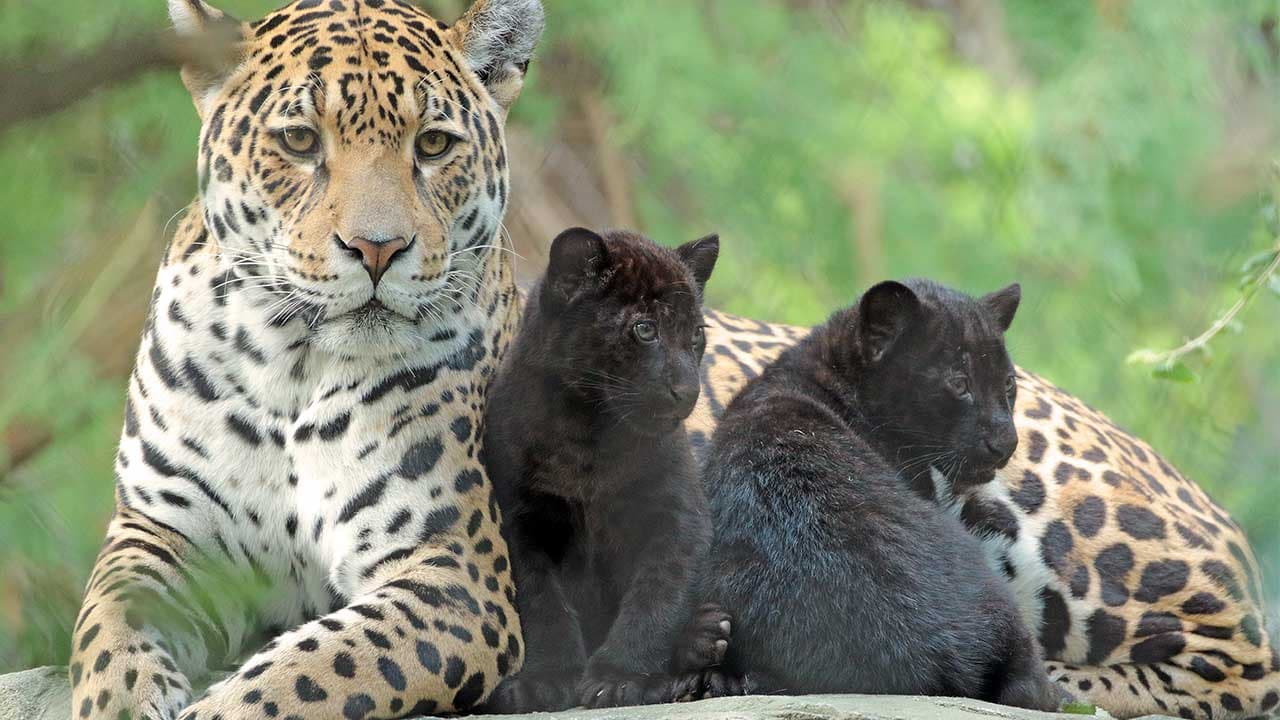The birth of an elephant is no small feat – it is a collective effort of the entire herd.
This was demonstrated in a rare and remarkable event at Kruger National Park in South Africa, where a mother elephant gave birth in the water, with the support of the herd.
Elephants have the longest gestation period of any mammal, lasting up to 22 months. This makes each birth an important event. What made this case particularly special was that it occurred in the Olifants River, a popular location where elephant herds come to drink.

Photographer Dan Streck captured the event a few years ago, but the images recently gained widespread attention after being shared on the South African National Parks (SANParks) Facebook page.
Streck’s photos document the entire process, from the first image showing the amniotic sac to the protective actions of the herd. “The first photo shows the amniotic sac before birth,” Streck explained. “Afterward, the herd formed a protective circle around the newborn.”
While the calf quickly plunged into the water, the birth was not without its challenges. The shallow river initially made it difficult for the newborn elephant, which struggled to keep its head above water.

Fortunately, an older female elephant worked alongside the mother to help the calf find its footing. Michelle Henley, a scientist from Elephants Alive, pointed out that witnessing an elephant giving birth in the water is extremely rare and emphasized the importance of the herd’s role in ensuring a successful birth.
According to Henley, the older, more experienced elephants play a crucial role in ensuring the calf’s survival, especially in an environment where predators like crocodiles pose a threat.
“The older, more experienced female plays a vital role in helping the calf take its first breath,” Henley said. “If the elephants were too young or inexperienced, the situation could be much more dangerous.” Henley also highlighted the broader significance of this event, noting the crucial role of experienced matriarchs in ensuring the survival and well-being of the entire herd.

However, this role is increasingly under threat due to poaching, which often targets the oldest elephants with the largest tusks.
“Unfortunately, poaching targets the oldest individuals with the biggest tusks first, so we can only hope that these ‘maternal mentors’ continue to ensure the long-term survival of elephants and their society. This photo series beautifully illustrates their significance,” she added.

Thanks to the collective effort of the herd, the newborn calf eventually found its footing after about an hour of struggling to stay steady.
The mother then led the calf to the riverbank, marking the end of a remarkable and heartwarming display of unity among the herd.















